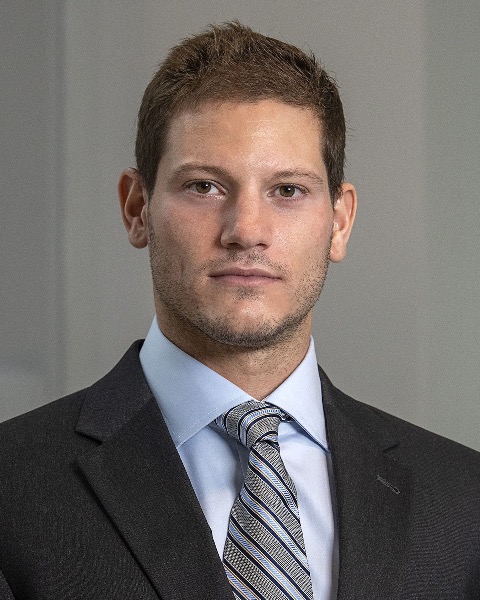Deformity
Early Outcomes with UNiD Virtual Surgical Planning Software and Patient-Specific Instrumentation in Adult Spinal Deformity
Friday, February 21, 2025

Joshua Weinberg, MD
Resident
Ohio State University Medical Center
Columbus, Ohio, United States
Presenting Author(s)
Introduction: Deformity correction requires detailed operative planning and implementation. Recent software engineering innovations including virtual surgical planning (VSP) platforms facilitate preoperative spinopelvic parameter assessment and consideration of various operative plans theoretically capable of achieving the desired corrections. UNiD software uses calibrated radiographs and an AI-integrated predictive model to simulate postoperative spinopelvic parameters based on corrective techniques and anticipated compensatory changes. Patient-specific spinal rods can be manufactured based on the generated plan providing intraoperative validation of correction. We assess the safety and efficacy of deformity correction using UNiD software and patient-specific rods.
Methods: We conducted a retrospective analysis of 146 patients who underwent long-segment thoracolumbar fusions with pelvic fixation and a minimum of 1-year follow-up for deformity correction consistent with SRS-Schwab. Patients were dichotomized into 2 groups: UNiD (61 patients), control (85 patients). Comparative analysis was performed to asses the accuracy of UNiD software and compare outcomes to our historical control prior to implementing UNiD. Equivalence analysis was performed using 5˚ and 1.5cm limits.
Results: Amongst UNiD patients, achieved spinopelvic parameters at 3-months were equivalent to the simulated plan: LL, PT, PI, SS, PI-LL mismatch, SVA, T1PA, TK, and L4-S1 lordosis. At 1-year, there was a significant improvement in all PROMs (p < 0.001). UNiD demonstrated a significant increase in L4-S1 lordosis (37.4˚ vs. 28.7˚,p=0.001) and decrease in T1PA (17.3˚ vs. 23.5˚,p=0.001) versus control. Achieved SVA, LL, and PI-LL mismatch in control group were not equivalent to improvements seen in UNID. UNiD demonstrated a significant increase in achievement of SVA < 5cm (73.8% vs. 55.3%,p=0.026) and T1PA < 20˚ (70.5% vs. 28.2%,p=0.001). Rod fracture rate was significantly higher in control (8.2% vs. 0.0%,p=0.042). On 1-year follow-up radiograph, there was no significant difference in PJK (p=0.278) or PJF (p=0.294).
Conclusion : UNiD accurately predicted spinal alignment achieved at 3-months and was associated with improved 1-year PROMs. UNiD software in conjunction with patient-specific rods may facilitate achievement of deformity correction goals with an improved safety profile at least up to 1-year due to decreased rod fractures. Further research is necessary to demonstrate long-term durability and delineate potential impact of VSP and patient-specific instrumentation particularly with continual software and engineering innovations.
Methods: We conducted a retrospective analysis of 146 patients who underwent long-segment thoracolumbar fusions with pelvic fixation and a minimum of 1-year follow-up for deformity correction consistent with SRS-Schwab. Patients were dichotomized into 2 groups: UNiD (61 patients), control (85 patients). Comparative analysis was performed to asses the accuracy of UNiD software and compare outcomes to our historical control prior to implementing UNiD. Equivalence analysis was performed using 5˚ and 1.5cm limits.
Results: Amongst UNiD patients, achieved spinopelvic parameters at 3-months were equivalent to the simulated plan: LL, PT, PI, SS, PI-LL mismatch, SVA, T1PA, TK, and L4-S1 lordosis. At 1-year, there was a significant improvement in all PROMs (p < 0.001). UNiD demonstrated a significant increase in L4-S1 lordosis (37.4˚ vs. 28.7˚,p=0.001) and decrease in T1PA (17.3˚ vs. 23.5˚,p=0.001) versus control. Achieved SVA, LL, and PI-LL mismatch in control group were not equivalent to improvements seen in UNID. UNiD demonstrated a significant increase in achievement of SVA < 5cm (73.8% vs. 55.3%,p=0.026) and T1PA < 20˚ (70.5% vs. 28.2%,p=0.001). Rod fracture rate was significantly higher in control (8.2% vs. 0.0%,p=0.042). On 1-year follow-up radiograph, there was no significant difference in PJK (p=0.278) or PJF (p=0.294).
Conclusion : UNiD accurately predicted spinal alignment achieved at 3-months and was associated with improved 1-year PROMs. UNiD software in conjunction with patient-specific rods may facilitate achievement of deformity correction goals with an improved safety profile at least up to 1-year due to decreased rod fractures. Further research is necessary to demonstrate long-term durability and delineate potential impact of VSP and patient-specific instrumentation particularly with continual software and engineering innovations.

.jpg)